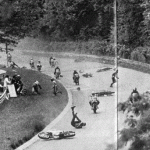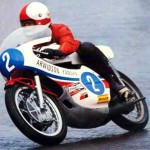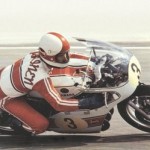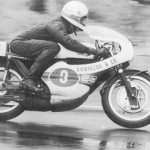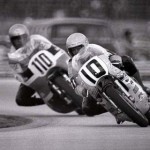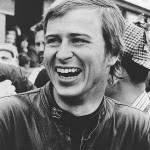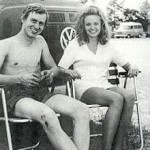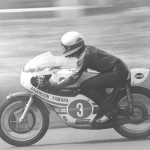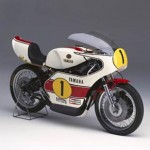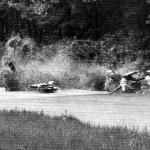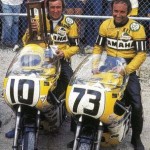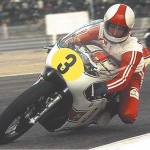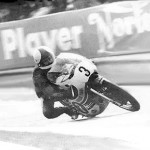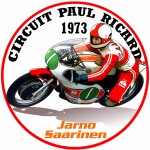Jarno Saarinen GP Genius – Part 1
Question: Valentino, you’re a keen student of motorcycle grand prix history. Who are your favourite riders from the past, and what do you know of Jarno Saarinen?
Valentino Rossi: My favourite riders are Schwantz, Rainey, Hailwood and Sheene. Saarinen was one of the strongest riders from the past.
With Valentino Rossi closing in on Giacomo Agostini’s record of 122 grands prix wins, many observers are reinforcing the popular view that Rossi is the greatest rider of all time (G.O.A.T).
Rossi is certainly the most successful rider of his era, but how would he really have gone against Wayne Rainey at his peak, or Ago and Mike Hailwood at the Isle of Man? Then there is seven-time GP world champ Phil Read, who never seems appear on the short list of G.O.A.T candidates, a fact that rankles him. To win one world championship is legend, to win seven, well, there are no words for that.
But the winning success that Read enjoyed in the 500cc class with MV Agusta in 1973 and ’74 may never happened. How so?
A new bike and a new kind of racer would change the face of GP racing forever in 1973, and the riding style he brought is the template which Rossi, and those who came before him, still use today.
Jarno Saarinen. The name will be familiar to many including Valentino Rossi and Enzo Trulli, who was a huge fan of Saarinen. In 1974, Enzo named his son Jarno – Jarno Trulli.
Born in Turku, Finland in 1945, Saarinen was a Finnish engineering graduate who would win the Finnish ice race and road race championships, becoming the first rider to successfully bring off-road racing techniques to the tar. Before Saarinen, road racers who had grown up in scrambles or dirt-track eschewed their off-road education once they raced on asphalt, and followed the classic style of wide, arcing lines, wheels kept in perfect alignment, sitting straight in the seat.
Saarinen sometimes rode an ice racer not with the customary steel spiked tyres, but stubbier studs that allowed the bike to move around. He became accustomed to the bike sliding around, dragging his knee on the ice to steady the bike whilst learning the importance of throttle control. With the emergence of snappy two-stroke road racers through the ‘60s, Saarinen was able to successfully parlay his ice racing style to road racing. The instant power response of the more powerful two-stroke engines allowed him to get on the power early, and his hard riding style meant that when the bike moved around beneath him, he didn’t mind, jumping kerbs and dragging his knee in the corners.
As an engineer, Saarinen understood that motorcycles were very top-heavy vehicles with a rider perched on top. He thus angled his clip-on handlebars steeply, which forced him to keep his torso low on the tank and forward in both a straight line and corners to keep the COG as low as possible. By the early 1970s, the world had the prototype rider for the 21st century whose style is essentially the same as Casey Stoner.
Saarinen won the 1972 world 250cc championship with some factory support from Yamaha, and had the world was at his feet. He was signed by the Yamaha factory to spearhead its ground-breaking water-cooled, two-stroke four-cylinder YZR500 that would eventually break the stranglehold of the all dominate MV four-strokes, ironically in the hands of Agostini, not Jarno.
To say Saarinen was dominant in 1973 is an understatement.
At the ’73 Daytona 200 in March, Saarinen won by 38 seconds from Yamaha TZ530 team-mate and his crew chief for the week Kel Carruthers, having slowed from a 50-second lead late in the race. At the Imola 200 in April, he won the first 100-mile (160.544km) leg from Bruno Spaggiari (Ducati) by over 40 seconds and the second leg from Walter Villa (Kawasaki) by 34 seconds.
At the opening 500cc grand prix of the year at Paul Ricard, Saarinen, in his 500cc race debut on the new Yamaha YZR500, defeated the MV Agusta of Read by 16 seconds after his MV team-mate Ago had fallen trying to catch the lightening fast Finn. Jarno increased the gap at a wet and cold Salzburgring, finishing 25 seconds ahead of his Yamaha team-mate Hideo Kanaya. Big wins weren’t uncommon in the era, but there was something quite different about this hard-riding 500 debutante.
His winning margins in the first three 250cc grands prix of 1973 were 28, 13 and 22 seconds.
Despite his dominance, Saarinen had said that he didn’t intend to race for much longer.
In a revealing snippet published in an interview conducted by veteran scribe John Brown in early 1973, Jarno said:
“Racing is risky and when you have to race all the time like I have to, this risk grows. For two, three years, even four, it is possible to keep racing without getting badly hurt or even killed. After that, the odds start to shorten. I have no intention of racing many more years. Another two or three at the most.”
About five months later, Saarinen, 27, was killed in a horrific crash on the first lap of the 250cc Italian Grand Prix on May 20, 1973, just when he was on the cusp of true greatness.
As a tribute to the remarkable and highly influential Finn, Motorsport Retro plans quite a few more stories on Jarno Saarinen.
Read part II here
Read more feature stories here

